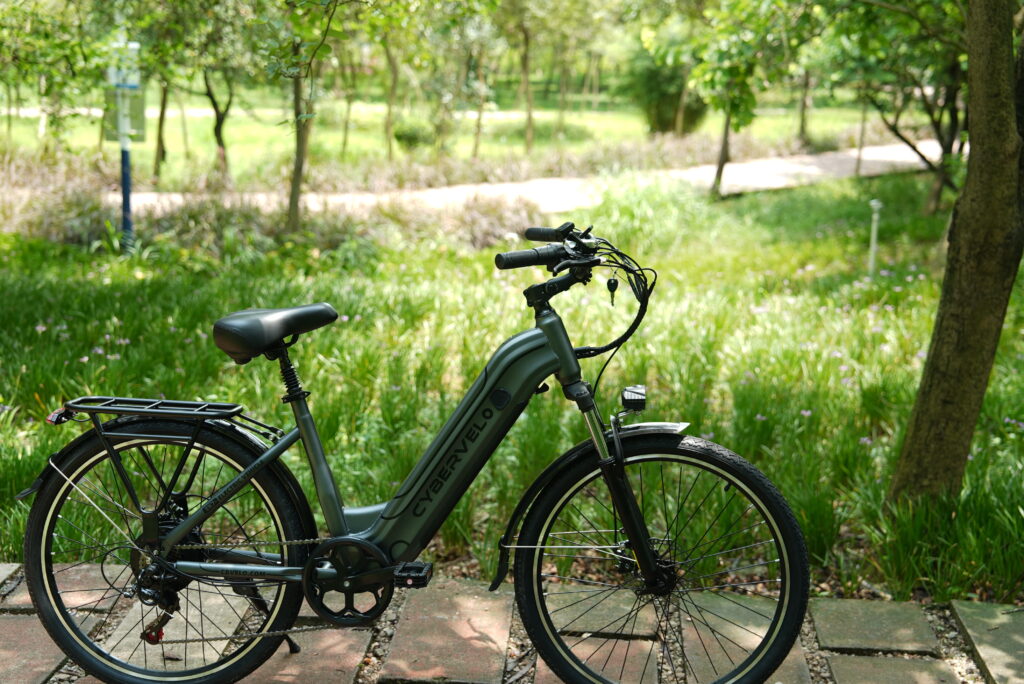E-bikes have long been celebrated as a paragon of “green” transportation, with their sleek designs and promise of eco-friendly commuting capturing the imagination of many. Yet, while it’s undeniable that they hold significant advantages over traditional cars when it comes to environmental friendliness, a deeper, more nuanced exploration of their true impact is essential if we’re to move beyond the surface-level hype. To truly grasp their environmental footprint, we need to take a comprehensive look at the entire lifecycle of an e-bike, from the moment its components are manufactured to the day it reaches the end of its useful life.
Manufacturing Footprint: The Hidden Environmental Cost at the Start
The manufacturing phase of an e-bike is where the most substantial environmental costs are incurred, a fact that often gets overshadowed by their eco-friendly reputation. At the heart of this lies the production of the battery, which relies on the extraction of critical metals such as lithium, cobalt, nickel, and manganese. Extracting lithium, for instance, is an energy-intensive process. In some regions, it involves large-scale evaporation of brine from salt flats, which not only consumes vast amounts of water but also disrupts local ecosystems, threatening the survival of unique plant and animal species. Cobalt mining, on the other hand, is plagued by not just environmental issues but also severe social concerns. Much of the world’s cobalt comes from artisanal mines in the Democratic Republic of the Congo, where child labor is rampant, and workers toil in dangerous conditions with little to no protection.
Beyond the battery, manufacturing the other components of an e-bike also takes a toll on the environment. The motor, which powers the bike, requires the processing of various metals and the assembly of intricate electrical parts, each step consuming energy and resources. The frame, typically made from aluminum or carbon fiber, involves energy-intensive production processes. Aluminum smelting, for example, is a highly energy-consuming operation, contributing significantly to greenhouse gas emissions. Carbon fiber production, while resulting in a lightweight and strong material, involves the use of toxic chemicals and high temperatures, adding to the environmental burden. The electronics that control the bike’s functions, such as the display, sensors, and wiring, also require the extraction and processing of rare earth metals, further depleting natural resources and causing ecological disruption.
When compared to a traditional bicycle, the upfront environmental footprint of an e-bike is considerably larger. A traditional bike’s manufacturing process is relatively simple, involving fewer materials and less energy-intensive production steps, making its initial environmental impact much lower.
Operational Efficiency: Shining Bright in Daily Use
If the manufacturing phase is where e-bikes face their biggest environmental challenge, the operational phase is where they truly excel. One of the key advantages of e-bikes is their exceptional energy efficiency during use. When it comes to charging the battery, even when using electricity from the grid – which in many places still relies heavily on fossil fuels – the greenhouse gas emissions per mile are minimal when compared to any fossil-fuel-powered vehicle.
To put this into perspective, consider that a typical car emits around 200 grams of carbon dioxide per mile, while an e-bike, when charged using grid electricity with an average carbon intensity, emits only about 10-20 grams per mile. In regions where a high proportion of electricity comes from renewable sources such as wind, solar, or hydroelectric power, this impact shrinks even further. In countries like Norway, where over 90% of electricity is generated from hydropower, the carbon footprint of charging an e-bike is negligible, making it an almost emission-free mode of transport during operation.
Moreover, e-bikes require only a fraction of the energy needed to move a car. A car’s engine is highly inefficient, with most of the energy from fuel being wasted as heat. In contrast, the electric motor of an e-bike converts a much higher percentage of electrical energy into mechanical energy, resulting in far greater energy efficiency. This efficiency not only reduces greenhouse gas emissions but also translates to lower operating costs for the user, as less energy is consumed per mile traveled.
Another significant benefit of e-bikes during operation is that they produce zero tailpipe emissions. Unlike cars, which release pollutants such as nitrogen oxides, carbon monoxide, and particulate matter into the air, e-bikes contribute nothing to local air pollution. This is particularly important in urban areas, where poor air quality is a major public health concern, leading to respiratory diseases, cardiovascular problems, and even premature deaths. By replacing car trips with e-bike rides, we can significantly improve the air we breathe in cities.
Replacement of Car Trips: The True Measure of Environmental Benefit
E-bikes’ real environmental power is not just in how they run. It’s in replacing car trips.
Using e-bikes instead of cars, especially short city trips, helps the environment a lot.
Studies show this. In major European cities, replacing 10% of short car trips with e-bikes cut CO₂ by up to 15%. U.S. studies found e-bike users who once drove cut annual carbon by 2,000 pounds on average. Fewer cars also mean less other pollution, which helps health and reduces smog and acid rain.
But e-bikes don’t always help. It depends on what they replace.
If they replace walking, regular bikes, or public transport, the gain is small. Sometimes, it’s even bad.
Walking and regular bikes make no emissions. Replacing them with e-bikes adds a little to environmental impact. Public transport with many people has low emissions per person. Replacing it with one e-bike may not help much.
Battery Life and Disposal: Managing the End-of-Life Impact
Lithium-ion batteries powering e-bikes have a 3-7 year lifespan, depending on usage, charging, and environment. Their end-of-life management is key to minimizing e-bikes’ environmental impact.
Recycling infrastructure for these batteries is improving but not universal. Proper recycling recovers valuable materials like lithium and cobalt, reducing mining needs and associated costs, and prevents toxic leaks from landfills.
Battery lifespan significantly affects overall impact: longer life spreads manufacturing emissions over more miles. Proper maintenance – avoiding overcharging, keeping moderate temperatures, and not fully draining regularly – extends longevity.
The Verdict: A Balanced View of E-Bikes’ Environmental Impact
The key to their environmental benefit lies in their use as a replacement for cars. When e-bikes actively displace car usage, their net environmental benefit becomes overwhelmingly positive, with significant reductions in greenhouse gas emissions, air pollution, and other environmental harms.
To maximize this benefit, several steps can be taken. First and foremost, users should focus on replacing car journeys with e-bike rides whenever possible, particularly for short urban trips. Second, proper maintenance of both the e-bike and its battery is essential to extend their lifespan, thereby spreading the manufacturing emissions over more miles. This includes regular checks and servicing of the bike’s components and following best practices for battery care. Finally, ensuring that the battery is recycled responsibly at the end of its life is crucial to recover valuable materials and prevent environmental contamination.
It’s important not to let the manufacturing footprint of e-bikes overshadow their immense potential for reducing transport emissions when used as car alternatives. With the right usage patterns and proper end-of-life management, e-bikes can play a significant role in creating a more sustainable transportation system.https://regic.net



